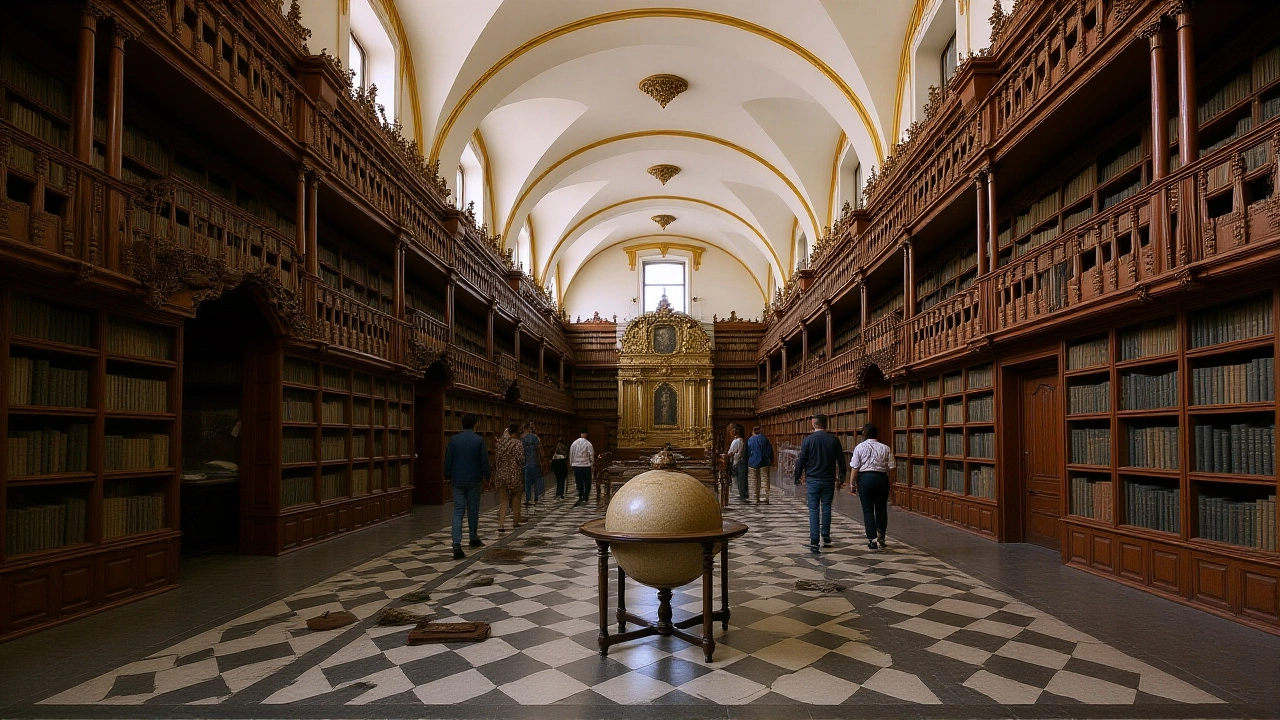When Palafoxiana Library was officially declared the oldest public library in the Americas by UNESCO on October 22, 2025, scholars across the continent took note.
The accolade comes from the historic city of Puebla, where the library first opened its doors in 1646 under the guidance of Bishop Juan de Palafox y Mendoza. Its Catholic origins are well documented in a Voice of America (VOA) report released the same day.
But why does this matter to a reader living in, say, Boston or Boston’s North End? Because the story of the Palafoxiana Library is a thread that weaves through the broader tapestry of library development across the New World, linking centuries‑old religious collections to today’s digital information hubs.
Historical Roots: From Missionary Repository to Public Treasure
The library began as a modest collection of theological texts, liturgical manuals, and early Spanish‑colonial works intended for clergy education. Over time, Bishop Palafox opened the shelves to scholars and laypeople alike, a move that was radical for the 17th‑century Spanish Empire. By the early 1700s, the institution had amassed more than 5,000 volumes, including rare incunabula and indigenous codices.
Its survival through wars, earthquakes, and political upheavals is a testament to the community’s commitment. In 1842, a devastating fire threatened to erase the collection, but a group of Puebla citizens rallied, rescuing over 2,000 books and prompting the first formal preservation plan in Latin America.
The American Trail of Firsts
Across the border, several U.S. libraries cherish their own “firsts.” The Sturgis Library in Cape Cod, Massachusetts, occupies a 1644 building—making it the oldest library building in the United States. While its origins are secular, the structure itself predates many colonial institutions.
Further down the coast, the Redwood Library and Athenaeum in Newport, Rhode Island, was founded in 1747 by a circle of local philanthropists, including the Irish philosopher George Berkeley. Their charter, “having nothing in view but the good of mankind,” still guides the library’s public‑service mission.
In 1757, the Library Company of Burlington, New Jersey, received a royal charter from King George II, cementing it as a colonial-era hub for legal and scientific works. Meanwhile, Benjamin Franklin’s 1790 donation of 116 books to his hometown of Franklin, Massachusetts, birthed the oldest public lending library still operating under its original purpose.
The Peterborough Town Library in New Hampshire, founded in 1833, deserves a special mention: it was the world’s first free, tax‑supported public library. Although the town didn’t secure explicit legislative authority for tax‑funded libraries until 1849, the town’s pioneering spirit set a precedent that rippled across the United States.

Architectural Heritage and Collections
Many of these institutions remain in their original buildings, a rarity in a world of modern expansions. The Redwood Library’s 1749 Georgian edifice still houses more than 200,000 items, ranging from early American newspapers to original manuscripts by Herman Melville.
The Sturgis Library’s wooden beams and original plaster walls give visitors a palpable sense of 17th‑century colonial life. Meanwhile, the Palafoxiana’s Baroque façade and ornate interior courtyards reflect the rich mestizo culture that helped preserve the collection through centuries of change.
Andrew Carnegie’s library‑building spree between 1881 and 1919 added another layer to this architectural story, funding over 1,700 libraries worldwide. Though Carnegie’s footstep never directly touched Puebla, his philanthropic model inspired later Mexican benefactors who helped restore the Palafoxiana in the early 2000s.
Impact and Legacy: Why These Libraries Still Matter
Beyond bricks and books, these institutions are social anchors. In Puebla, the Palafoxiana serves as a research hub for scholars studying early colonial literature, indigenous languages, and religious art. Its digitization project, launched in 2022, now makes over 1,200 manuscripts accessible online.
In the United States, the Redwood Library’s community programs reach over 30,000 patrons annually, offering free workshops on genealogy, digital literacy, and early American history. The Peterborough Town Library’s tax‑supported model has been replicated in over 40 states, proving that public funding can sustain free access to information.
These libraries also act as cultural diplomats. UNESCO’s designation has already boosted tourism to Puebla, with an estimated 12,000 visitors in the first month after the announcement. Local businesses report a 15% uptick in revenue, underscoring how heritage sites can fuel economic growth.

Future Outlook: Preservation Meets Innovation
Looking ahead, the Palafoxiana plans to launch a bilingual virtual reality tour by 2026, allowing users worldwide to “walk” through its historic reading rooms. Meanwhile, the Redwood Library is piloting an AI‑driven cataloguing system that promises to halve the time it takes archivists to index new acquisitions.
In the United States, a coalition of historic libraries is lobbying the federal government for a new “Library Heritage Act,” which would provide grant funding for structural repairs and digitization efforts. If passed, the act could safeguard these centuries‑old institutions for another generation.
One thing is clear: whether nestled in the volcanic hills of Puebla or the cobblestone streets of Newport, these libraries prove that public access to knowledge is a timeless public good.
Frequently Asked Questions
How does UNESCO’s recognition affect the Palafoxiana Library?
UNESCO’s designation raises the library’s international profile, attracting scholars, tourists, and funding for preservation. Since the announcement, visitor numbers have risen by roughly 12,000, and the Mexican government pledged $2.3 million for structural upgrades.
What makes the Peterborough Town Library’s model unique?
Founded in 1833, it was the first library funded directly by local taxes, offering free access to all residents. This model proved viable long before New Hampshire passed a law authorizing tax‑supported libraries in 1849, paving the way for modern public‑library funding.
Why is the Redwood Library considered a National Historic Landmark?
Designated in 1962, the Redwood Library embodies early American philanthropy and architectural elegance. Its 1749 Georgian building remains largely unchanged, and its collection of 200,000 items includes rare first editions that are crucial to understanding colonial intellectual life.
What challenges do historic libraries face today?
Aging infrastructure, funding shortages, and the need to digitize fragile materials are top concerns. Climate‑related risks, such as humidity and seismic activity, also threaten collections, prompting many libraries to seek federal and private grants for conservation.
Will other libraries in the Americas receive similar UNESCO recognitions?
UNESCO continues to evaluate historic sites worldwide. Libraries that demonstrate exceptional cultural, architectural, or scholarly significance—like the Biblioteca Nacional de Brasil or the Biblioteca Palafoxiana’s sister institutions—could be nominated for future World Heritage status.
